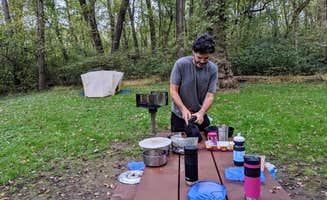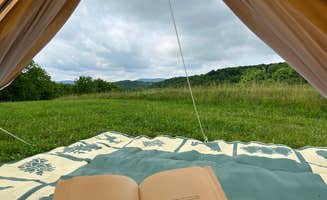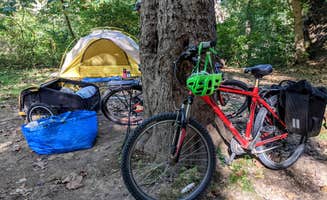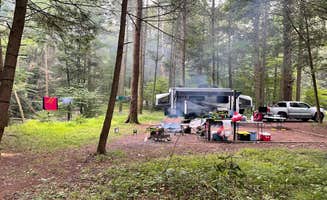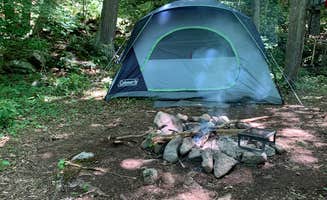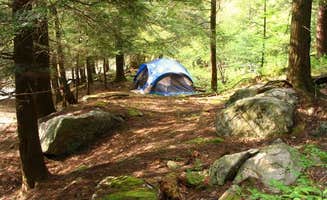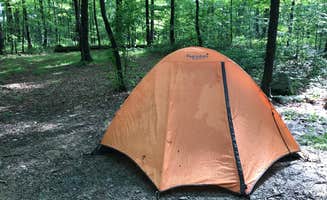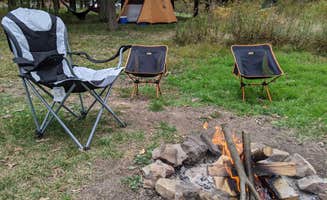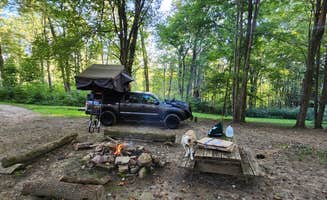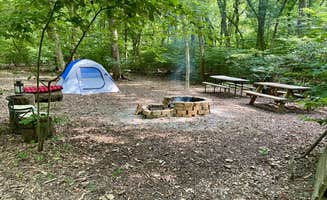Primitive tent camping around Cumberland, Maryland typically occurs between mid-April and early November. The region sits where the Appalachian Mountains meet the Potomac River at approximately 650 feet of elevation, creating diverse camping environments from riverside flats to forested mountain slopes. Temperatures can fluctuate significantly during spring and fall camping seasons, with overnight lows sometimes dropping below 40°F even when daytime temperatures reach the 70s.
What to do
Fishing opportunities: Big Run State Park provides excellent access to both stream and reservoir fishing. One visitor notes, "Stream was incredible and lively with trout and crayfish," making it an ideal spot for anglers seeking a more secluded fishing experience.
Historic tunnel exploration: The Paw Paw Tunnel Campground serves as a basecamp for exploring the historic 3,118-foot tunnel. "Tunnel is very fun to travel through. Kids and adults alike enjoy the tunnel. Tunnel is always nice and cool refreshing during a long bike ride or hike on a hot day," shares one camper who recommends bringing flashlights for the dark interior.
Creek wading: During summer months, the shallow streams provide natural water play areas. At Big Run State Park, campers appreciate the creek access: "The kids loved playing in the water. Very quiet and relaxing!" The gentle flowing water is suitable for supervised children and refreshing on hot summer days.
Hiking trails: Lost Land Run offers more challenging trail options for experienced hikers. A local warns, "It is not recommended for beginners or small children as it is very Rocky, slippery, with too much potential for a serious injury with inexperienced people." The trails follow the river with substantial elevation changes.
What campers like
Riverside sites: The sound of moving water enhances the camping experience at several locations. One camper at Big Run State Park Campground described "beautiful campsite and loved the sound of the river as white noise!" These riverside sites remain among the most requested in the area.
Site privacy: Many campers value the spacing between sites at primitive campgrounds. "There was a lot of space between each site and it was very peaceful," reports a camper about Big Run, while another notes, "The best spots are in the woods adjacent to the stream. You can set up your camp chair and enjoy the creek sounds."
Group camping options: For larger gatherings, Stoney Creek Campground offers dedicated group sites. "The two large sites can accommodate up to 40 people each with plenty of parking. Two sides are separated by a dense forest, piles of drift wood and noise from the river running through boulders," making them ideal for family reunions or organized groups.
Connectivity break: Some sites provide a true disconnect from technology. Lost Land Run offers complete digital detachment: "Due to location in-between the tall mountains there is absolutely No CELLPHONE SERVICE past the first couple campsites and only very spotty at those campsites as well."
What you should know
Train noise: Several campgrounds near Cumberland experience railroad noise. At Cacapon Junction Hiker-biker Overnight Campsite, one reviewer simply notes "Train close by," which accurately captures the potential noise disturbance common to many sites in the region.
Seasonal bathrooms: Facilities vary widely by season. At Barnum Whitewater Area, a camper explains the range of accommodations: "Primitive campsites are $10 a night. Small cabins are $35 a night, with larger cabins going at $56 a night. There is electricity in the cabins."
Wildlife awareness: Lost Land Run requires wildlife vigilance. A local advises to "Keep an eye out for lots of the more dangerous varieties of wildlife native to the area big cats, snakes galore, bear, coyotes etc but beautiful views if you're ready for an adventure."
Terrain challenges: Many of the best tent camping areas near Cumberland, Maryland feature uneven ground. One camper at Paw Paw Tunnel suggests visitors should "Bring a rake- I've never seen so many black walnuts on the ground!" This seasonal nuisance can make tent setup difficult.
Tips for camping with families
Beginner-friendly spots: For families new to tent camping, Maple Festival Park offers a gentle introduction with its amenities. "Set your tent up on the lawn, up on the stage, or under the long lean-to, if you want to get out of the weather. It's all up for grabs for the night," providing flexibility for families with younger children.
Safety considerations: Choose campsites based on children's ages and abilities. Lost Land Run specifically cautions against bringing small children due to slippery rocks and challenging terrain.
Pit toilet planning: Many sites feature basic facilities. At Big Run, a camper notes: "Pit toilets were pretty clean... Water and dump station is 10 minutes up the road at New Germany State Park." For families with young children, consider campgrounds with more developed restrooms or bring portable options.
Mosquito preparation: Bug protection is essential during summer months. One camper at Big Run warns, "It was great after sleeping in the car for a few nights. There was a lot of space between each site and it was very peaceful, but the mosquitos sucked." Pack appropriate repellent and protective clothing.
Tips from RVers
Hybrid camper sites: Some primitive areas can accommodate small trailers. At Abrams Creek Campground and Retreat Center, "Tented a cabin for two nights to hide from bad weather. Cabin had electric service, a microwave, electric heater, refrigerator and lights." These hybrid options offer backup shelter during inclement weather.
Site selection for trailers: At Big Run State Park, site 73 works well for modest-sized trailers: "Used lot 73 for a 26ft hybrid camper. Fit perfectly! It was flat, large, clean and right by the creek." Always confirm site dimensions before bringing a trailer to primitive campgrounds.


